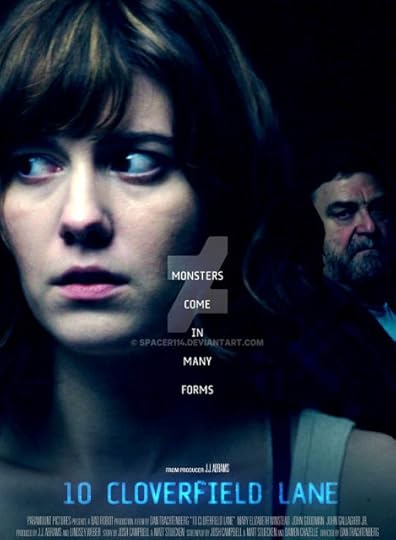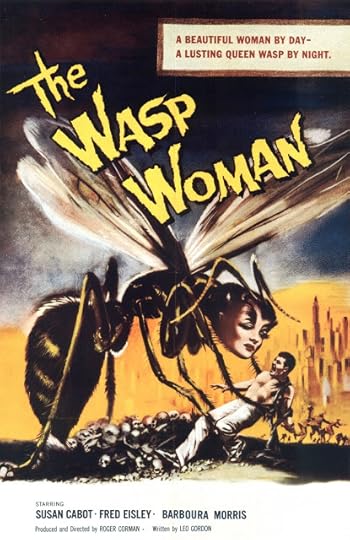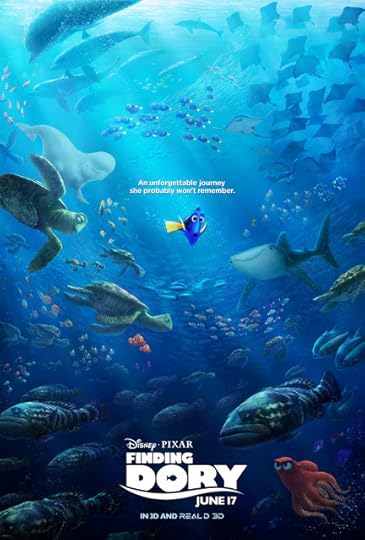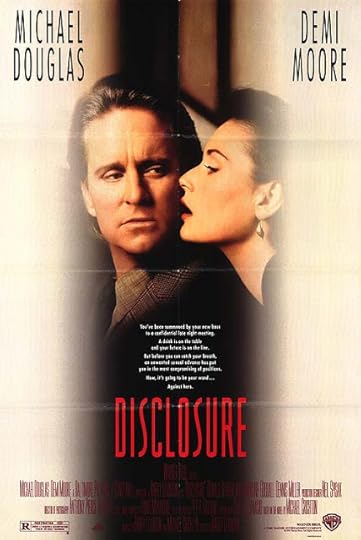Movies I Watched in June, Part 2

I never caught the original 2008 “Cloverfield” in the theater, meaning I was never subjected to its notorious stomach-churning handicam cinematography, but I did see it on DVD and though I wasn’t as blown away as some people, I thought it was a solid, modern twist on your standard Godzilla premise. So, though I wasn’t jonesing for a sequel, I was very intrigued by the excellent thriller for the seeming follow-up, this year’s “10 Cloverfield Lane.” Three people in some sort of shelter with something outside, and the always ominous Tommy James and the Shondells song “I Think We’re Alone Now” adding a genuine sense of menace. I’m happy to say, after seeing “10 Cloverfield Lane,” that the film delivers on its promise of a tense, tight, suspenseful thriller with a simple story, a solid cast and an admirable sense of restraint as far as revealing what the situation really is. I don’t want to spoil things, but here’s the basic setup: A young woman (Mary Elizabeth Winstead) drives off from her husband (leaving her wedding ring behind) and gets into a car accident. When she awakens, she’s in the nicely-appointed underground shelter of a somewhat intimidating guy (John Goodman) who also has a younger man (John Gallagher Jr.) down there with him. She tries desperately to escape, but soon learns that what’s outside might be even more of a threat than what’s inside. And that’s all I’m going to tell you. At its best, “10 Cloverfield Lane” is a locked-room mystery, with Winstead’s character trying to learn exactly what the situation is and who – if anyone – she can trust. It all builds to some fairly explosive revelations (in every sense of the word) and if the ending abandons the intimate tension of acts one and two, it delivers some impressive visuals and a nicely played character resolution. Not a game changer by any means, but a smart, satisfying thriller. Plus, Goodman returns to the sort of genuinely unnerving menace he hasn’t shown since way back in 1991’s “Barton Fink.”

I’ve seen this 1959 Roger Corman bargain-basement chiller before, but I couldn’t resist watching it again when it showed up randomly on TCM. For one thing, it’s just over an hour long, so it’s not like I’m wasting my whole life rewatching a (frankly) mediocre movie when I could be studying Shakespeare of curing cancer. But more than that, there’s something about the almost homemade quality of “The Wasp Woman” that I find oddly appealing. In a previous post, I compared it to a no-budget version of “Mad Men” (filmed in the actual “Mad Men” era), but it’s almost more like a staged drama, with limited sets, an (obviously) amateur cast and almost no special effects – despite the crazy image on the poster (which has absolutely nothing to do with anything that happens in the movie itself). As I get older and see more and more movies, I find myself gravitating to the ones where I can see the fingerprints left by the people who made them, the ones that don’t just showcase a director’s style but almost have a homemade quality about them. (It’s one of the reasons I’ve come to love Ed Wood that has nothing to do with him being a quote-unquote “bad”director.) “The Wasp Woman” isn’t that great, but it also isn’t that slick – and sometimes, that makes all the difference.

When she was a toddler, Allie went through a period when she was obsessed with “Finding Nemo,” watching it every chance she got. Which means I wound up watching “Finding Nemo” every chance she got, too, and instead of coming to hate it, I came to admire it. It’s an epic story of parenthood with dozens of wonderful moments sprinkled throughout, all brought to life with visuals that, for 2003, were state of the art (and still look pretty impressive 13 years later). But, being that Ellen Degeneres’ Dory was my least favorite part of “Nemo,” I wasn’t exactly waiting breathlessly at the theater to see this sequel. Still, the weather was hot, the cinema was cool and we had nothing to do that Sunday, so Amy, Allie and I ventured out to see “Finding Dory.” And while it failed to hit the glorious heights of its predecessor, I have to admit, even with the Ellen-centric plot, it wasn’t half bad. What I really admired about the movie was that, in its typically subtle Pixar way, it seemed to be aimed at families with special-needs children, addressing the tension between a parent’s desire to protect their child with their desire to let them make their own way in the world. (Sort of like what Marlin dealt with in “Finding Nemo,” but with a slightly different focus.) Going beyond Dory’s lack of short-term memory, it becomes apparent that most of the new characters have some sort of damage they learn to deal with: an octopus (Ed O’Neill) has PTSD, a beluga whale (Ty Burrell) can’t echolocate and a whale shark (Kaitlin Olson – yes, Sweet Dee from “Always Sunny!”) can’t see very well. Naturally, all these misfits team up in the end to help Dory find her parents, and though the end is really never in doubt, I have to admit, when I saw what Dory’s parents had been doing in the years since she went missing, it hit me right in the spot a good Pixar film always manages to reach. Not on the level of, say, a “Toy Story 3” or “Inside Out,” but surprisingly effective nonetheless.

Maybe it’s because I remember the era so well, but I’ve got a real fascination for movies about computers from the early to mid 1990s. The technology, though only a few decades old, seems dowright archaic, and what the characters consider groundbreaking is trivial to our modern eyes. Which brings me to this 1994 drama that is not only a hilariously dated look at high-tech, but also a hilariously dated look at sexual harassment. And this was no low-budget cheesefest, either. Based on a best-seller by Michael Crichton (the year after “Jurassic Park” hit theaters), it boasts direction by Barry Levinson, a score by Ennio Morricone and a cast that includes Michael Douglas, Demi Moore, Donald Sutherland, Dylan Baker and (ahem) Dennis Miller (who starred in the tech-thriller “The Net” a year later). The big twist is that the sexual harasser in this case is Moore, who tricks Douglas into almost having sex late at night, then accuses him of harassment the next morning. It was all a very hot-button issue in 1994, but it looks silly 22 years later, with Douglas learning the lesson that maybe he shouldn’t pat his secretary on the ass every chance he gets. More than the sexual harassment plot, though, what stands out is the vision of technology we had back in those very first days of the internet. Douglas, a highly placed executive at a tech company, literally gets about five emails a day, and the arrival of each one is heralded like the delivery of a telegram from a long-lost relative. Even better, the “revolutionary” invention at the center of a film is a ridiculous virtual reality program that requires the user to put on a helmet and walk on a treadmill just to access some normal, everyday computer files. You know, the kind you could just click on even back in the prehistoric era of 1994. The CGI shots of a wireframe Michael Douglas trying to evade a virtual Demi Moore (complete with Moore’s head!) as an avatar the IT guy in an angel costume (!) offers advice is one of the great, surreal images in 1990s cinema. No, make that all cinema.
Published on July 09, 2016 11:42
No comments have been added yet.
Will Pfeifer's Blog
- Will Pfeifer's profile
- 23 followers
Will Pfeifer isn't a Goodreads Author
(yet),
but they
do have a blog,
so here are some recent posts imported from
their feed.



